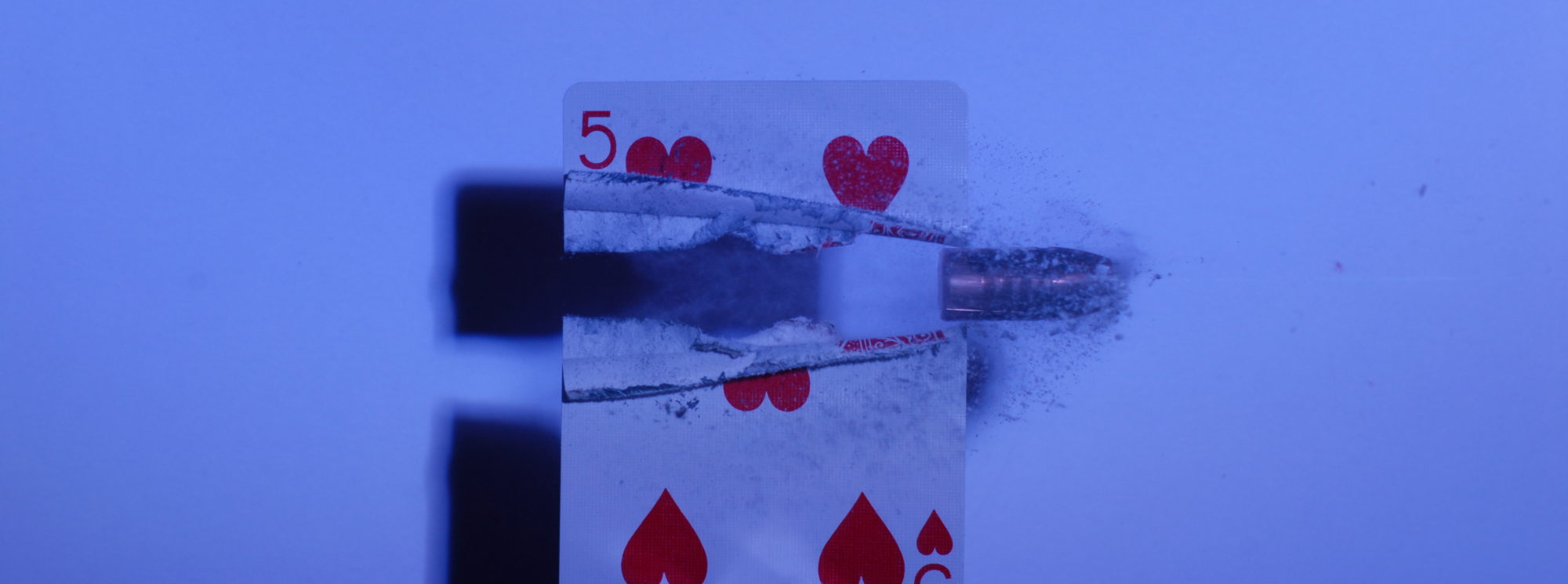Townsend Whelen once said “Only Accurate Rifles are Interesting”
There’s a lot of truth to that, but I think rifles which are inaccurate as just as interesting as I get to ask/answer the question “Why?”. I was anxious to see if this Pawn Shop purchase was going to be something that was going to need a ton or work, or just a bit of tweaking. So I wasted no time in getting out to my local shooting range to test it out.
When it comes to testing 100 yard accuracy I generally like to have a good quality bullet, a front support, and I like to measure velocity. Notice I said bullet, and not ammunition. This is because in my experience a bullet makes the biggest difference in the accuracy potential of a load within 100 yards. Yes, you can fine tune that with powder, brass, and primer selection, but to get a good baseline accuracy, you have to start somewhere. I like to start with a quality bullet that I know shoots well.

For this reason I went with a Remington Hog Hammer 30-06 load that is loaded with a 168gr Barnes TSX bullet. I have personally done a fair bit of testing with Barnes bullets, and I know that these bullets are capable of shooting Sub-MOA groups. The Remington part of the load is more of a “Meh” for me. As a side note this ammunition is no longer in production and I bought a few boxes at the pawn shop when I bought the rifle.


When sighting in a bolt action rifle, I like to start at 25 yards and bore site the rifle. This involves removing the bolt and looking through the bore, and then looking through the scope. What I see through the bore should match with the scope. Typically this get’s me pretty close.

The range I was at has the closest targets at 50 yards. So that’s where we started. The boresighting got me on paper, but only just. There was quite a bit of adjustment to get the rifle to shoot close to the point of aim. When I sight in, I fire a shot, and look at the impact, then adjust the scope. When I am reasonably confident that I am close, I shoot 3 shot groups.

Ballistic-X is one of those “Must Have” apps if you are shooting groups and want to keep good electronic records. It uses a photograph to measure the group size. You give the app the length reference, in this case a 1in square, the distance to target, the point of aim, the shots you want to include, and the caliber you are shooting. It does all the measurements for you. You can input the details for the load and the date, which it overlays on the image.
No one should rely on a single three shot group. Multiple three shots groups should be used to establish accuracy. I think 3 shot groups are a bare minimum, a better standard is 5 or 10 shot groups. However that gets expensive quick. With the thin profile of this rifles barrel, I’d be at the range all day just waiting for the barrel to cool. For this reason I stayed with 3 shot groups.
Switching from 50 yards to 100 yards brought some additional scope adjustments. Once I was confident in the sights, I shot 3 more 3 shot groups.



We live in the “Golden Time” of cheap accurate rifles. Rifles can be had for $350-$400 and shot 1in at 100 yards right out of the box. This wasn’t always true. In fact even twenty years ago, basic hunting rifles shot 1.5 to 2 inches at 100 yards and that was deemed acceptable. Consumer expectations have changed and this has changed the firearms industry, forcing them to improve.
It is important to keep this in mind when evaluating rifle accuracy on older rifles. Applying today’s standards to rifles made over 60 years isn’t prudent. 1.5in at 100 yards is probably what this rifle shot out of the box with quality ammunition. It’s also how the factory likely intended this rifle to perform. So I am perfectly happy with this performance.
So where is the room for improvement? If this is shooting to factory spec, what can we do to improve the rifle?
We there is the obvious in load tweaking. We can work through a load development to find out what this rifle likes to shoot. Different powders, COAL’s, and bullets can help tighten the group. That will take some time, but the one big thing we can do is a little trigger work.
The rifle has a single stage trigger, which is expected on a hunting rifle. I am used to shooting guns with good, crisp triggers that break cleanly. This rifle has a fairly stiff trigger, and that produced a few fliers as I would slowly put pressure on the trigger and it didn’t feel like it was breaking at a consistent pressure. As a result I would sometimes squeeze harder and that abrupt muscle movement tugged on my hold and would throw the shot.
If I had a trigger gage we would measure the trigger pull. That is likely the next step, purchase a trigger gage and see if a little stone work can even out the trigger pull and improve it.
As part of this field exercise we gathered a bit of velocity data with the Lab Radar Chronograph. We’ll be presenting this data in a separate write up, and using this data to help evaluate the quality of the ammunition and see what effect that may have on our group size.
